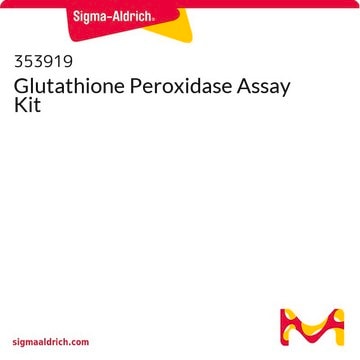494496
NMP
biotech. grade, ≥99.7%
Synonym(s):
1-Methyl-2-pyrrolidone, N-Methyl-2-pyrrolidone, NMP
About This Item
Recommended Products
product name
1-Methyl-2-pyrrolidinone, biotech. grade, ≥99.7%
grade
biotech. grade
Quality Level
vapor density
3.4 (vs air)
vapor pressure
0.29 mmHg ( 20 °C)
0.99 mmHg ( 40 °C)
Assay
≥99.7%
form
liquid
autoignition temp.
518 °F
expl. lim.
9.5 %
impurities
≤0.005% water
≤0.01% free amines (CH3NH2)
color
APHA: ≤20
refractive index
n20/D 1.47 (lit.)
pH
7.7-10.0 (20 °C, 100 g/L)
bp
202 °C (lit.)
81-82 °C/10 mmHg (lit.)
mp
−24 °C (lit.)
solubility
acetone: miscible(lit.)
alcohol: miscible(lit.)
chloroform: miscible(lit.)
ethyl acetate: miscible(lit.)
water: miscible(lit.)
density
1.028 g/mL at 25 °C (lit.)
λ
H2O reference
UV absorption
λ: 285 nm Amax: 1.00
λ: 300 nm Amax: 0.50
λ: 325 nm Amax: 0.10
λ: 350-400 nm Amax: 0.01
application(s)
peptide synthesis
SMILES string
CN1CCCC1=O
InChI
1S/C5H9NO/c1-6-4-2-3-5(6)7/h2-4H2,1H3
InChI key
SECXISVLQFMRJM-UHFFFAOYSA-N
Looking for similar products? Visit Product Comparison Guide
Related Categories
General description
Packaging
greener alternative product
Signal Word
Danger
Hazard Statements
Precautionary Statements
Hazard Classifications
Eye Irrit. 2 - Repr. 1B - Skin Irrit. 2 - STOT SE 3
Target Organs
Respiratory system
Storage Class Code
6.1C - Combustible acute toxic Cat.3 / toxic compounds or compounds which causing chronic effects
WGK
WGK 1
Flash Point(F)
195.8 °F - Pensky-Martens closed cup
Flash Point(C)
91 °C - Pensky-Martens closed cup
Certificates of Analysis (COA)
Search for Certificates of Analysis (COA) by entering the products Lot/Batch Number. Lot and Batch Numbers can be found on a product’s label following the words ‘Lot’ or ‘Batch’.
Already Own This Product?
Find documentation for the products that you have recently purchased in the Document Library.
Customers Also Viewed
Our team of scientists has experience in all areas of research including Life Science, Material Science, Chemical Synthesis, Chromatography, Analytical and many others.
Contact Technical Service







